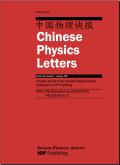材料的通用机器学习 Kohn-Sham 哈密顿方程
IF 4.2
2区 物理与天体物理
Q1 PHYSICS, MULTIDISCIPLINARY
引用次数: 0
摘要
虽然密度泛函理论(DFT)是电子结构计算中的一种普遍计算方法,但其计算需求和可扩展性限制依然存在。最近,利用神经网络对 Kohn-Sham DFT 哈密顿参数化,已成为加速电子结构计算的一条大有可为的途径。尽管取得了进步,但仍存在一些挑战,如计算大量 DFT 训练数据以探索每个新系统的必要性,以及为多元素材料建立精确机器学习模型的复杂性。为了克服这些障碍,本研究引入了一个通用电子哈密顿模型,该模型是根据材料计划中几乎所有晶体结构的第一原理 DFT 计算所获得的哈密顿矩阵进行训练的。我们证明了该模型在预测整个元素周期表的电子结构方面的通用性,包括复杂的多元素体系、固态电解质、莫伊里扭曲双层异质结构和金属有机框架。此外,我们利用通用模型对 GNoME 数据集中的晶体进行了高通量电子结构计算,确定了 3940 个具有直接带隙的晶体和 5109 个具有平带的晶体。通过为计算电子特性提供可靠高效的框架,这个通用哈密顿模型为不同领域的进步奠定了基础,例如轻松提供庞大的电子结构数据集,以及使整个元素周期表的材料设计成为可能。本文章由计算机程序翻译,如有差异,请以英文原文为准。
Universal Machine Learning Kohn–Sham Hamiltonian for Materials
While density functional theory (DFT) serves as a prevalent computational approach in electronic structure calculations, its computational demands and scalability limitations persist. Recently, leveraging neural networks to parameterize the Kohn–Sham DFT Hamiltonian has emerged as a promising avenue for accelerating electronic structure computations. Despite advancements, challenges such as the necessity for computing extensive DFT training data to explore each new system and the complexity of establishing accurate machine learning models for multi-elemental materials still exist. Addressing these hurdles, this study introduces a universal electronic Hamiltonian model trained on Hamiltonian matrices obtained from first-principles DFT calculations of nearly all crystal structures on the Materials Project. We demonstrate its generality in predicting electronic structures across the whole periodic table, including complex multi-elemental systems, solid-state electrolytes, Moiré twisted bilayer heterostructure, and metal-organic frameworks. Moreover, we utilize the universal model to conduct high-throughput calculations of electronic structures for crystals in GNoME datasets, identifying 3940 crystals with direct band gaps and 5109 crystals with flat bands. By offering a reliable efficient framework for computing electronic properties, this universal Hamiltonian model lays the groundwork for advancements in diverse fields, such as easily providing a huge data set of electronic structures and also making the materials design across the whole periodic table possible.
求助全文
通过发布文献求助,成功后即可免费获取论文全文。
去求助
来源期刊

Chinese Physics Letters
物理-物理:综合
CiteScore
5.90
自引率
8.60%
发文量
13238
审稿时长
4 months
期刊介绍:
Chinese Physics Letters provides rapid publication of short reports and important research in all fields of physics and is published by the Chinese Physical Society and hosted online by IOP Publishing.
 求助内容:
求助内容: 应助结果提醒方式:
应助结果提醒方式:


